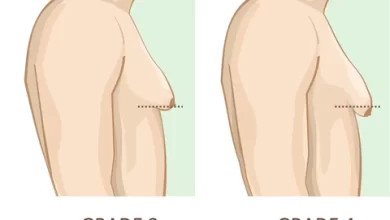The Ultimate Bodyweight Blast: A Complete Workout Guide
In an era marked by hectic schedules and limited time, finding a fitness routine that is both effective and convenient can be a challenge. However, with bodyweight training, you can achieve remarkable results without the need for expensive gym memberships or bulky equipment. In this comprehensive guide, we will explore the world of bodyweight workouts, providing you with the knowledge and tools to embark on your journey to a stronger, fitter, and healthier you.
Understanding Bodyweight Training:
Bodyweight training is a form of exercise that utilizes your own body weight as resistance. This means you can perform a wide range of exercises using just the weight of your body, making it an accessible and versatile option for people of all fitness levels. Unlike traditional weightlifting, which relies on external weights, bodyweight exercises challenge your muscles in a functional and dynamic way, improving strength, endurance, flexibility, and mobility simultaneously.
The Benefits of Bodyweight Workouts:
Bodyweight training offers numerous benefits that make it an attractive option for fitness enthusiasts:
- Convenience: Bodyweight workouts can be done anywhere, anytime, requiring minimal space and no specialized equipment.
- Affordability: With bodyweight training, you don’t need to invest in expensive gym memberships or equipment, making it a cost-effective option for fitness.
- Versatility: There are countless bodyweight exercises that target every muscle group in the body, providing endless variety and opportunities for progression.
- Functional Strength: Bodyweight exercises mimic natural movement patterns, improving functional strength and enhancing performance in everyday activities.
Essential Bodyweight Exercises:
To build a comprehensive bodyweight workout routine, it’s important to include a variety of exercises that target different muscle groups. Some essential bodyweight exercises include:
- Push-ups: Target the chest, shoulders, and triceps.
- Squats: Work the quadriceps, hamstrings, and glutes.
- Pull-ups: Strengthen the back, biceps, and forearms.
- Lunges: Engage the lower body muscles, including the quadriceps, hamstrings, and glutes.
- Planks: Strengthen the core muscles, including the abdominals, obliques, and lower back.
Designing Your Bodyweight Workout:
When designing a bodyweight workout, it’s important to consider your fitness goals, current fitness level, and personal preferences. Here are some steps to help you create an effective bodyweight workout routine:
- Determine your goals: Are you looking to build strength, improve endurance, lose weight, or enhance overall fitness?
- Choose your exercises: Select a variety of exercises that target all major muscle groups, including upper body, lower body, and core.
- Determine the number of sets and repetitions: Aim for 2-4 sets of each exercise, performing 8-15 repetitions per set.
- Plan your rest periods: Take 30-60 seconds of rest between sets to allow your muscles to recover.
- Incorporate a warm-up and cool-down: Start your workout with a 5-10 minute warm-up to prepare your body for exercise, and finish with a 5-10 minute cool-down to help your body recover.
Sample Bodyweight Workout Routine:
Here’s an example of a beginner-friendly bodyweight workout routine that you can try:
- Warm-up: 5-10 minutes of light cardio (e.g., jogging, jumping jacks, or skipping rope)
- Circuit:
- Push-ups: 3 sets of 10 repetitions
- Bodyweight squats: 3 sets of 15 repetitions
- Inverted rows (using a sturdy table or bar): 3 sets of 8 repetitions
- Lunges (alternating legs): 3 sets of 12 repetitions per leg
- Plank: 3 sets of 30 seconds
- Cool-down: 5-10 minutes of stretching exercises targeting all major muscle groups.
Advanced Bodyweight Training Techniques:
Once you’ve mastered the basics, you can challenge yourself with more advanced bodyweight exercises and techniques. Some advanced bodyweight training techniques include:
- Plyometrics: Explosive movements like jump squats, plyometric push-ups, and box jumps.
- One-arm push-ups: Perform push-ups while balancing on one arm, increasing the intensity and targeting the chest, shoulders, and triceps.
- Pistol squats: Single-leg squats that require balance, strength, and flexibility.
- Muscle-ups: A combination of a pull-up and a dip, requiring significant upper body strength and coordination.
Progression and Variation:
To continue seeing results and avoiding plateaus, it’s important to incorporate progression and variation into your bodyweight workouts. Here are some strategies to help you progress:
- Increase resistance: Make exercises more challenging by adding weight (e.g., wearing a weighted vest or holding a dumbbell).
- Change the tempo: Slow down the eccentric (lowering) phase of exercises to increase time under tension and stimulate muscle growth.
- Modify exercises: Experiment with different variations of exercises to target different muscle groups and keep your workouts interesting.
- Try new exercises: Incorporate new bodyweight exercises into your routine to challenge your muscles in different ways and prevent boredom.
Tips for Success:
To get the most out of your bodyweight workouts and stay motivated, consider the following tips:
- Stay consistent: Make exercise a regular part of your routine by scheduling workouts into your calendar and sticking to them.
- Listen to your body: Pay attention to how your body feels during and after workouts, and adjust your intensity and volume accordingly.
- Stay hydrated and fuel your body: Drink plenty of water throughout the day and eat a balanced diet rich in lean protein, complex carbohydrates, and healthy fats to support your workouts and recovery.
- Get enough rest: Allow your body to recover and repair by getting adequate sleep and taking rest days when needed.
Conclusion:
Bodyweight training offers a convenient, effective, and versatile approach to fitness that can help you achieve your health and fitness goals without the need for expensive gym memberships or equipment. By incorporating a variety of bodyweight exercises into your routine, designing well-rounded workouts, and progressing over time, you can build strength, improve endurance, and enhance overall fitness from the comfort of your own home or any location of your choosing. So, whether you’re a beginner just starting out or an experienced athlete looking for a new challenge, give bodyweight training a try and experience the ultimate bodyweight blast for yourself!



